The wiper washer mechanism for the 67 mustang is a strange beast. Rather than use the electric pump like the previous year, they went back to a mechanical bellows style mechanism that is powered by the drivers left foot. The pedal has an integral wiper switch, which I previously used frequently for a single swipe by stepping on the pedal just enough to activate the switch but not pump the bellows.
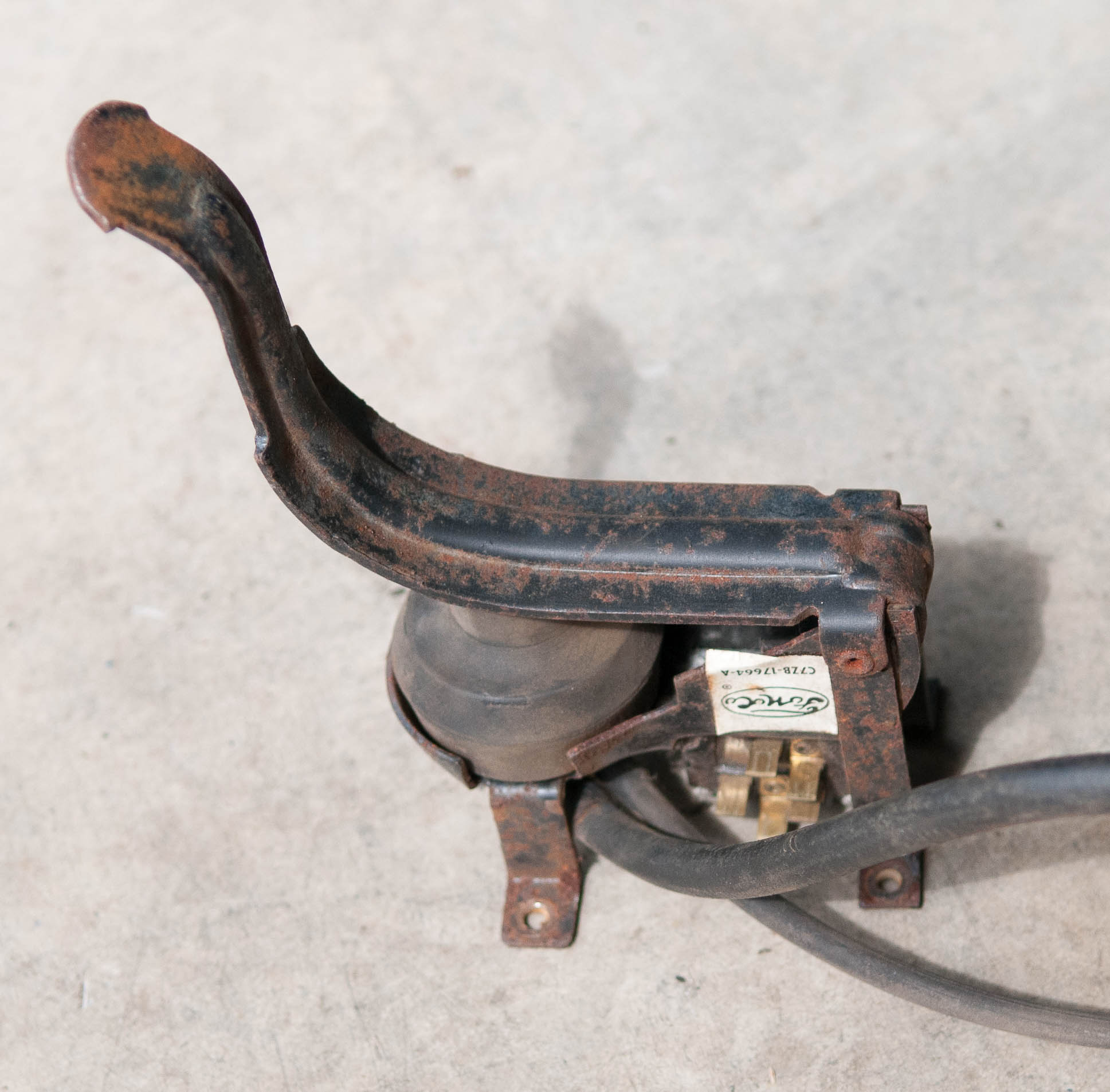
Like other novelties in the 67, this one is a limited run, so no one reproduces it. I managed to get the mounting hardware (4 screws) and the rubber bellows, but that’s it. The switch is attached permanently unfortunately. I figure for the hoses, I don’t need a 10 inch section with an adapter, I can just attach directly to the ones coming through the firewall as I have plenty of slack.
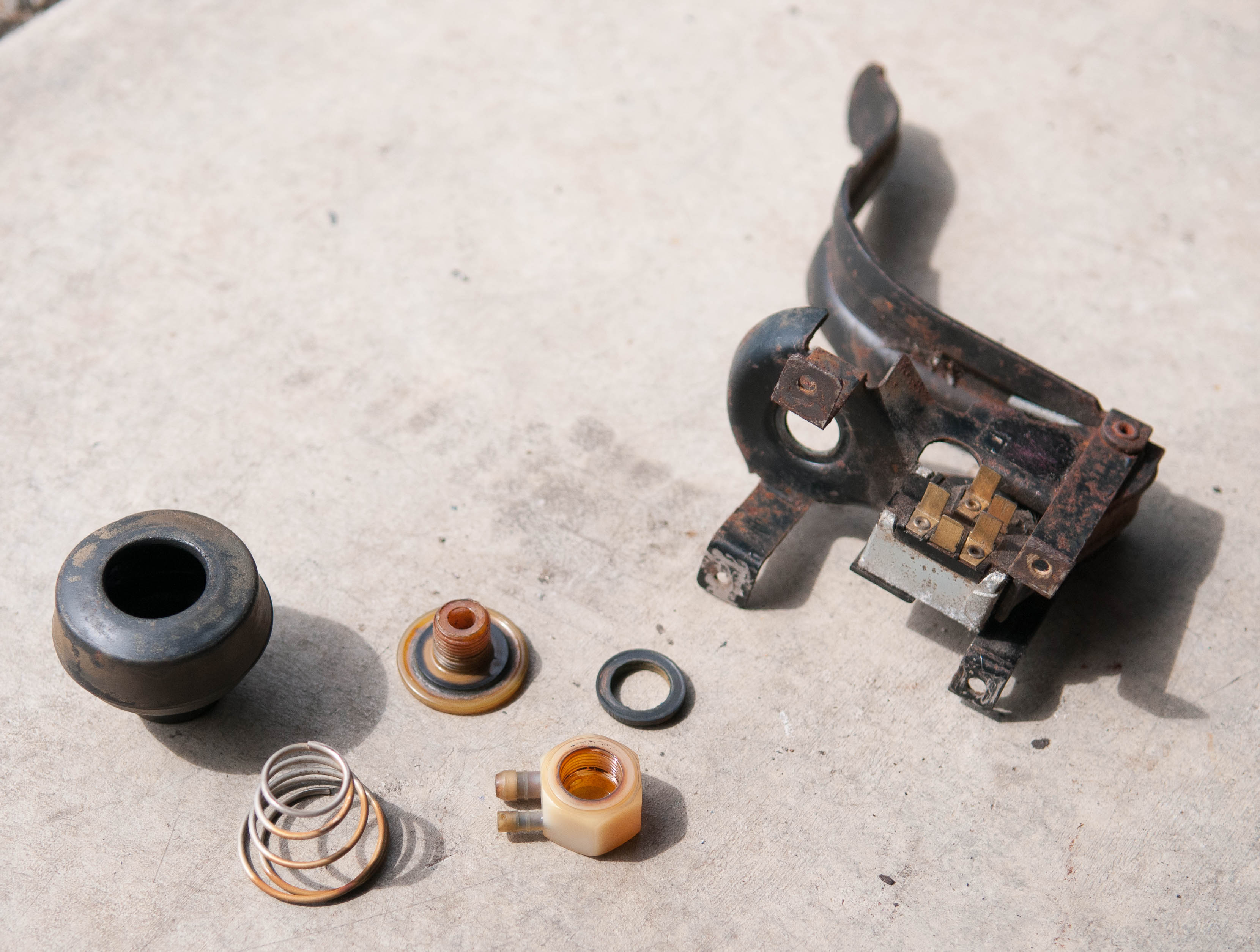
For the rest of the parts, I handled them very carefully. 50 year old plastic is not known for its durability. On the up side, having been well preserved in washer fluid for many years, things looks pretty good. The bellows looks pretty good, but I went ahead and replaced it for good measure. The mouth of it was a bit hardened and shrunken where it needed to seal. The flat O ring is a bit firm and wouldn’t seat properly though. Looking for a replacement, I noticed it was the exact same size as a garden hose seal, so I picked up a pack of those at the hardware store.
The spring gets worked into the bellows, small end away from the hole. Then the threaded nipple goes in over it.

The O ring goes next, filling the gap left by the bellows. It all screws to the pedal assembly base. It needed to be carefully compressed to wedge it into place, with much trepidation around damaging the plastic threads.
Before I started putting things back together, I cleaned up the pedal assembly. This time, I had to mask off the switch before blasting and painting. I tried to stay away from it with the media blaster to be safe. Not that anyone is going to see it up close any time soon, so the bottom of the pedal is not as important for looks, but to protect it from the rust again mostly.
For my first test fitting, I found that no water would move. Looking at the plastic nut where the hoses attach, I found that there are little ball stops in it to act as vales to keep the water pressure going the right direction, for suction or squirting. Mine were locked in place so I used a paper clip with a bend just in the right location to be able to fit it in the center of the nut and push on the stuck valve. That got things moving again.
My first test fit showed the original O ring would not seal well at all, causing very little suction, and lots of leaking. I replaced it with the garden hose O ring and tried again. That produced pretty good results, but still some leaking. I was pretty sure the leak was coming from there, not the hose fitting. Pretty sure. So I used some black rubber adhesive from the local auto parts store to seal the space between the O ring and the bellows. That did the job, with just a little leak from the hose, as its the old hardened original. Throwing that out should solve that last problem.

I was able to save the original Ford sticker by carefully peeling it off and gluing it back on after assembly. Over the years, the glue turned soft and it peeled off fairly well with the careful use of a razor blade. I also put a new foot pedal on it, which I have never seen before. I figure they wouldn’t have shipped it with just a bare steel end, but by the time it got to me 23 years ago, it was long gone.
In the future, I may look for a replacement for the bellows in the form of a push button for a remote electric pump. Keeping the washer fluid out of the passenger compartment seems like a smarter idea. For now, I have a washer for the first time since I owned the car, but I honestly will probably still just use it for intermittent wipers.
I wasn’t able to mount it yet. The part of the floor/firewall where it was originally was replaced due to rust. The replacement part needs to be drilled for the mounting location. I figure I should do that once I have the kick plates in place to know where it should go exactly. Maybe I wont be able to wait that long. We’ll see.
While I was cleaning up the pump, I decided to just finish up the washer system and put in the nozzles at the cowl, along with the hoses and new bag. I missed the firewall seal and hose mounting, so like most of these projects, I’m back to waiting for parts before I can call it done. I figure now is probably a good time to replace the hood cowl weather strip as well, which hides the washer hoses, so that’s on the way too.
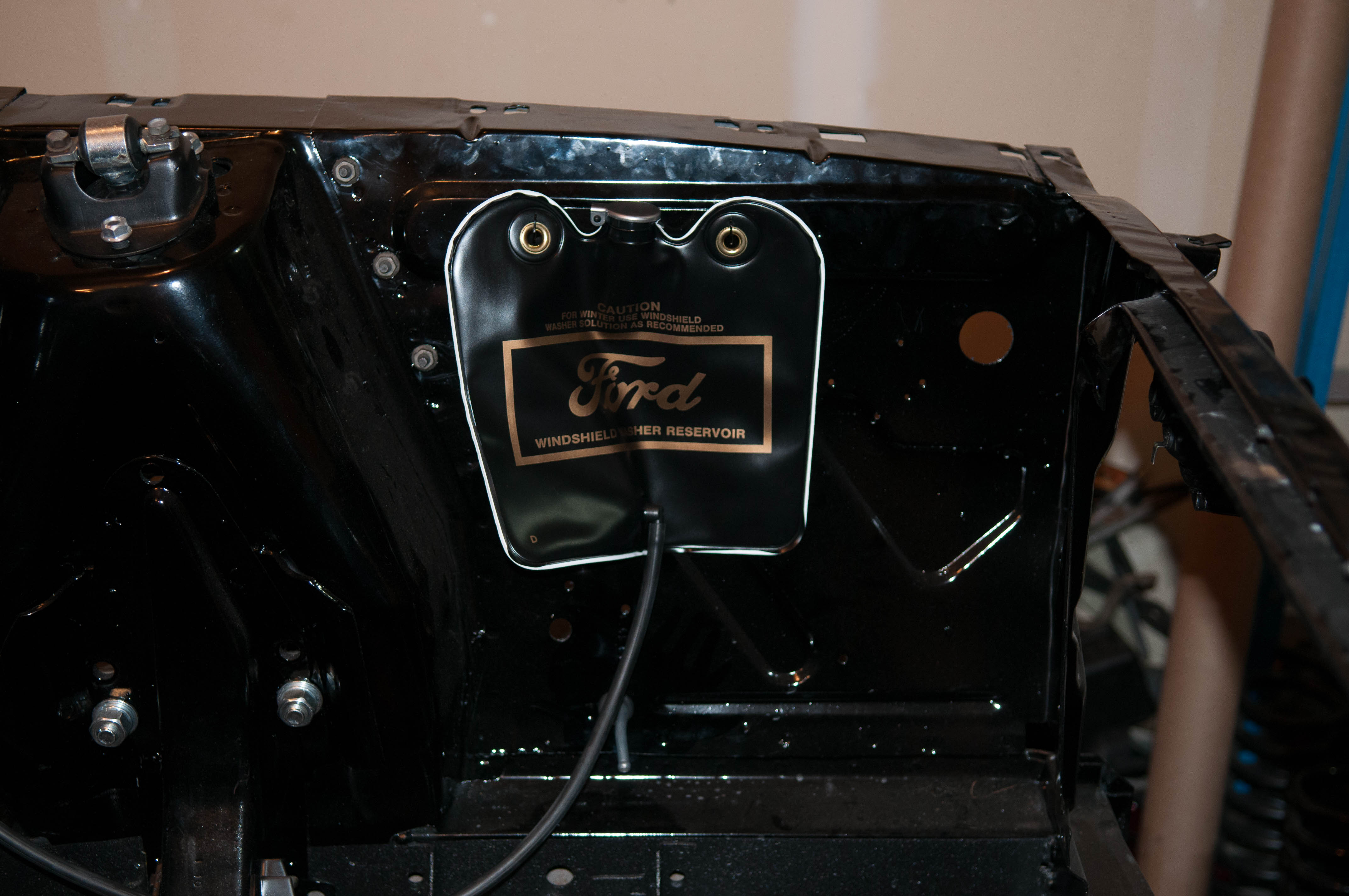
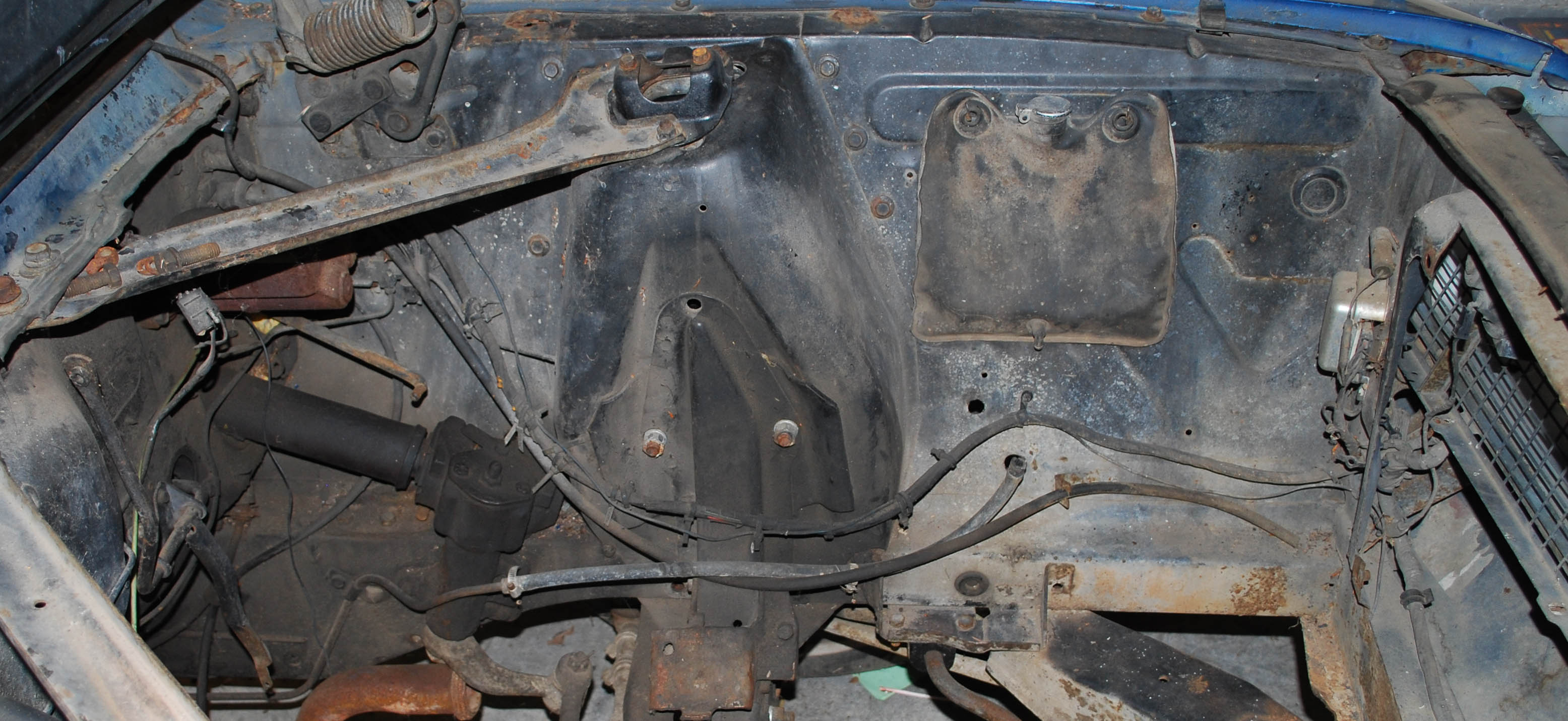
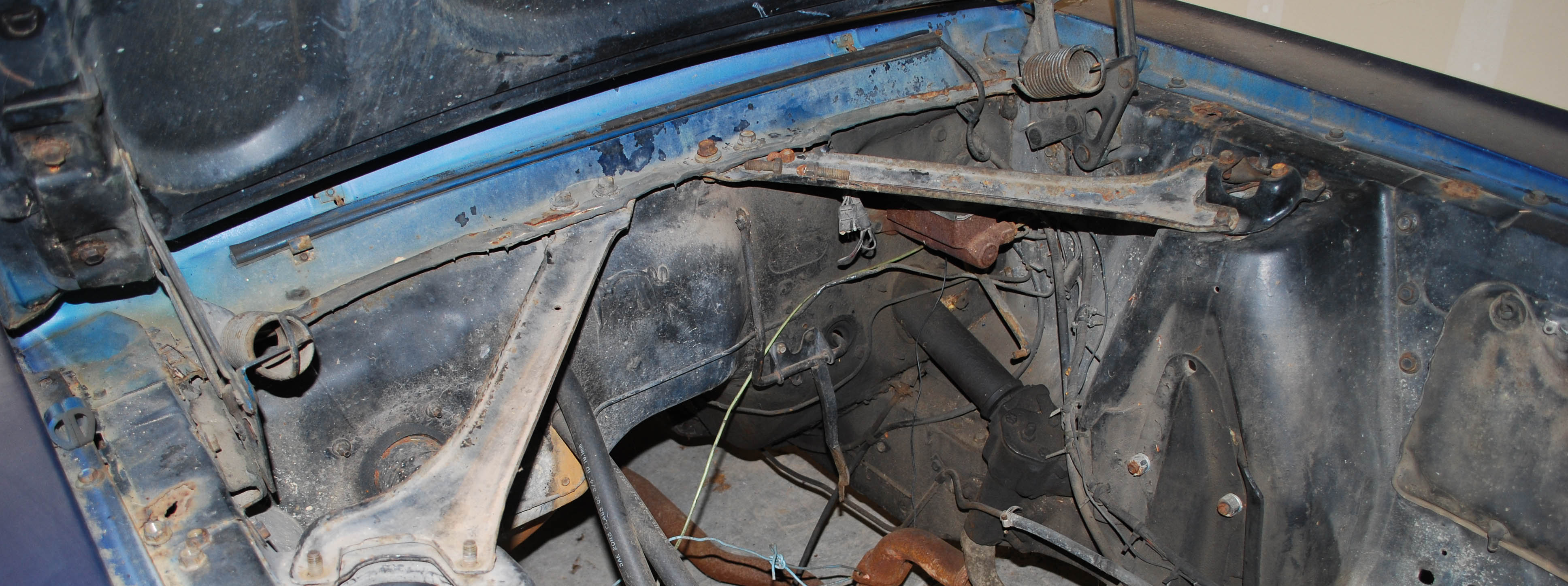
It looks a tad bit better, I think. A little less monochromatic overspray/dirt themed.
UPDATE: I rebuilt one from my other 67 and added some more details here.



It’s the same for ’68. I’m working on mine now.
LikeLike
Pingback: 67 Washer Pump Follow Up – Brad Albrecht's Mustang Restoration Projects
Brad; the plastic nut where the hoses attach- the check valve for the small fitting for the output hose seems to work OK, but the inlet side check valve seems to be stuck open. I can blow & suck through (both directions). I’m unable to make it work OK. Any suggestions?
LikeLike
Not sure on this one. I have to rebuild the pump on my 67 convertible too, so I will check it out and see if I can remember how the check valve stop works. It sounds like yours is stuck in the open position. Have you tried using a paperclip to push it out from the bellows point? Is the stop even still there?
LikeLike
I rebuilt the convertible pedal and made a new post, which is now linked at the bottom of this one. It goes into more detail on the check ball, specifically on the large inlet hose. Hopefully that helps.
LikeLike
Thanks, Brad. Very good – and with nice pics! I am working on mine now.
LikeLike
Since this was limited. Did all 67 mustangs have this
LikeLike
To my knowledge, yes, all 67’s had the same manual pedal style washer pump. The early model did use a fluid bag style reservoir under the hood, where late 67 had a solid plastic bottle though. Other than that, I am not familiar with other changes in the wiper washer system during the 67 year.
LikeLike
Thanks for the write-up. I’ll be restoring my foot pump this weekend.
LikeLike